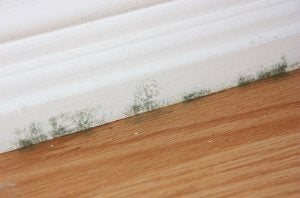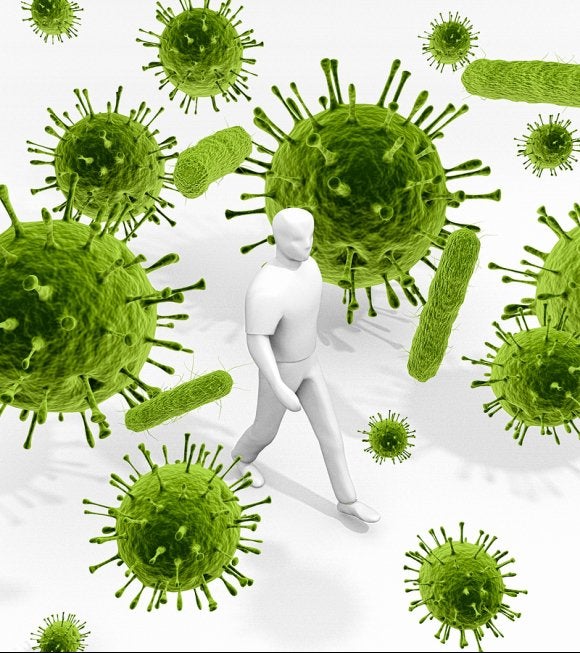-
A Look at the Most Common Types of Household Mold
Mold is everywhere, but the last place it should be is inside your home. Although there are only a few types of mold that can cause very serious health problems, no amount of indoor mold is good for or your family. Unfortunately, considering how humid the Bay Area and the general condition of the homes and buildings in the vicinity, household mold is a common problem in San Francisco. To protect your health and the health of your family, schedule mold testing with an indoor environment testing company in the Bay Area. Technicians will perform a number of different tests to confirm or deny the presence of various different types of harmful indoor molds, including:
Aspergillus

Aspergillus is one of the most common environmental molds. In fact, the Centers for Disease Control and Prevention claims that most people breathe in these fungal spores every day. Although Aspergillus exposure isn’t harmful for people with healthy immune systems, people with weakened immune systems can develop sinus or lung infections which can spread to other parts of the body.Cladosporium
Another common mold in the environment, Cladosporium is usually found on plants and other organic matter outdoors. Indoors, this type of mold can grow in areas where moisture is consistently present, such as in bathrooms and laundry rooms. Although Cladosporium rarely causes human illness, it is known to cause several different types of infections, including brain infections.Stachybotrys Chartarum
The most notorious (and dangerous) of all common household molds, Stachybotrys chartarum is a greenish-black mold that typically grows on materials with a high cellulose and low nitrogen content, such as fiberboard, gypsum board, and paper. Also known as “ toxic black mold ,” Stachybotrys chartarum can cause nausea, vomiting, bleeding in the lungs, and more serious health effects with prolonged exposure. -
Angie’s List Mold Remediation
Large amounts of mold can cause serious health concerns as well as extensive harm to your home. If you suspect that there is mold in your home, it is best to get it under control before it can harm you, your family, or your property. Luckily, working with a company that conducts mold inspections in San Francisco can help keep your family safe. Watch this video to learn why you should act quickly to control mold.
Asthma, allergies, and skin rashes can be black mold symptoms. If you know you have mold, you can try to remove it on your own by eliminating the source of moisture, but mold remediation professionals can help to eliminate it completely. The costs of working with a professional can vary depending on the scope of the job, but it will help to keep your family safe and healthy.
-
Frequently Asked Questions About Mold
Most people understand that mold does not belong in their home, but they may not understand exactly why. If you are on the fence about getting a mold inspection near San Francisco, you may want to learn more about what mold in your home can mean for you and your family. In order to help you gain a wealth of knowledge about mold, here are the answers to some frequently asked questions on the topic.
Who is Affected by Mold?

Mold exposure can make you and your family extremely ill. If you have young children or infants in your home, they are very susceptible to theeffects of mold , as are the elderly. Also, if you have anyone in your home who has a suppressed immune system or asthma, mold can negatively affect them.Why Does Mold Grow?
In nature, mold is very important. It grows in order to help the decomposition of leaves, trees, and other plants. In nature, mold grows in areas with high moisture content. Mold is not hazardous in small amounts; however, in large amounts it can pose a threat to you or your loved one’s health.Where Can Mold Be Found?
Everyone is exposed to mold every day, but in small doses. In your home, it is possible for large amounts of mold to build up. Mold can be found in your carpets, on your walls, appliances, or your floors. Just as in nature, mold will thrive in damp places such as your bathroom, kitchen, or basement.How Can You Treat Mold?
Mold will grow anywhere that conditions are suitable for it. There is no stopping mold completely, but you can take action against it. If you suspect that there are large amounts of mold in your home, working with a company that specializes in mold inspections can help you control it. They can help you identify your home’s problem areas and should also be able to help you remove the mold. -
Bacteria Testing 101
Every home has bacteria, and many types of bacteria can even be good for you and your family. However, some bacteria can be hazardous to your health. Fortunately, companies that specialize in mold and asbestos testing in San Francisco often can also test for harmful bacteria in your home. To learn about bacteria testing, keep reading.
Like asbestos testing, getting a bacteria test performed in your home can help to protect your family from health hazards. There are generally two types of assessments that should be made. The first is a preliminary bacteria/sewage assessment. This assessment will check to see if sewage indicator bacteria are present in your home. The other assessment is a follow-up assessment to determine that the remediation efforts were successful. This assessment will take surface samples to make sure there are no sewage indicator bacteria present. If the first assessment was done correctly, your home will be cleared.

RECENT POSTS
categories
- Uncategorized
- Lead
- Mold
- San Francisco Mold & Asbestos Removal
- Indoor Air Pollution
- Mold Remediation
- Asbestos
- Safe Air Fast
- Mold Inspection
- Remediation
- Bacteria Testing
- Asbestos Testing
- Abatement
- Lead Testing
- Sewer Line
- Lead Survey
- Mold Testing
- Air Quality Inspection
- Home renovations
- Allergies
- Renovation Contractor
- Infographic
- lead paint
- Air Quality
- Air Quality Test
- Mold removal
